With the 1980s-era plan for the redevelopment of the Bayview Industrial Triangle having just expired, along with its restriction on residential development within said triangle, the approved plans for an 85-unit development to rise up to 65 feet in height along Third Street, between Innes and Jerrold Avenues in Bayview, have now been permitted as well.
In addition to a mix of 20 studios, 35 one-bedrooms, 25 twos and 5 threes, the 4200 Third Street/ 1610 Jerrold Avenue development is slated to yield over 6,000 square feet of new ground floor commercial space (tentatively divided into six separate spaces which could be merged), with a garage for 34 cars, a 6,500-square-foot rooftop open space for residents of the building, and a suite of streetscape improvements as well (including the planting of new street trees and public benches along Third).
And in addition to having been permitted for development, a demolition permit for the former Taco Bell/KFC building on the site, which was recently repainted, has been secured as well.
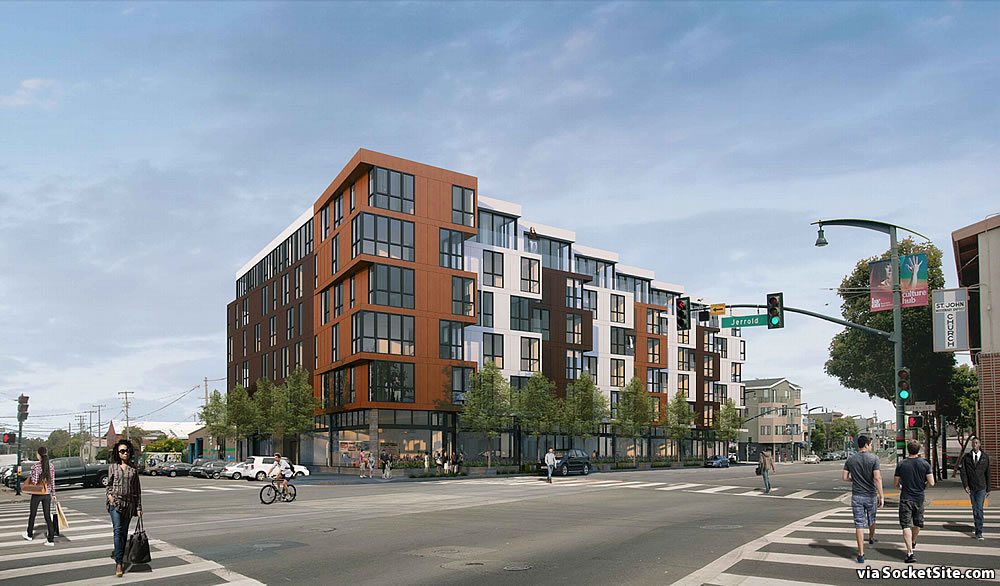
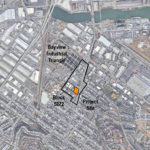
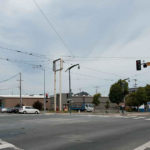
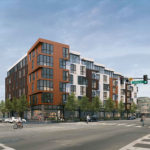
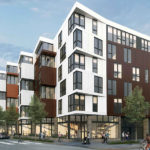
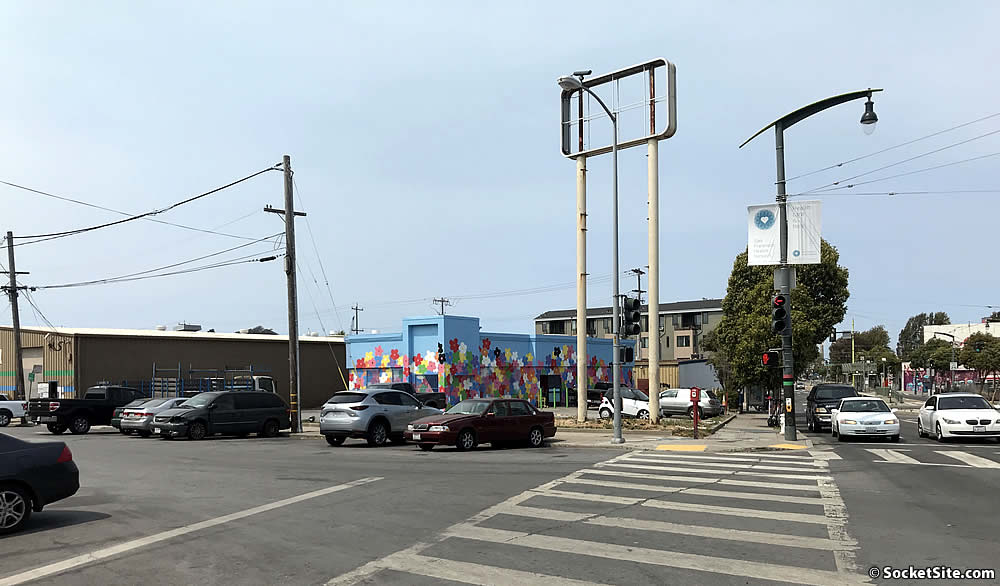
Handsome! Just the right amount of everythang.
Only 5 3BRs (~6%) is a crime. SF already has a glut of studios and 1BRs that will sit vacant for years. Bayview families need 3BRs, not studios and 1BRs. The koder kubicle kiddies are fleeing SF; who’s supposed to live in these inhospitable covid boxes?
Can you cite some evidence that new studios and 1br units are sitting vacant from years?
He used the future tense, and obviously we are still in the early stages of the corona virus-shaped economy so the evidence isn’t available yet.
Assuming the third sentence will come true, it does not seem unreasonable to conclude that people currently living in the Bayview, or people in a similar socio-economic situation will need housing and not people arriving here from elsewhere to temporarily work high-paid positions in the so-called “tech sector”.
But yes (perhaps this is the point you were trying to make) the developer always has the option of just sitting on the entitled project if they don’t think they are going to make top dollar for the studios and 1br units once they are built, so the most realistic projection would be that the studios and 1br units will not sit vacant. Because if we really do have a San Francisco exodus on par with what happened after the dotcom boom of the late 1990s, the units won’t actually come to market until after there’s a recovery.
We need all kinds of housing but we especially need studios and one bedrooms. The vast majority of my friends live in family homes with roommates because there are not enough affordable studios and one bedrooms so they are instead occupying housing that could be utilized by families.
No guarantee these will be any more affordable than the rest of the housing stock in the city.
Only someone who hasn’t had to recently look for a stuido or 1 bedroom apartment would think there’s a glut of them on the market.
While there certainly isn’t a glut, and cheaper isn’t the same as cheap, average asking rents for studios and one-bedrooms are currently down around 9 percent on a year-over-year basis (versus closer to 11 percent for the rental market overall) and listing activity has doubled.
They can all shop at Flora Grubb now…..
??I was thinking the same thing!
And where are they going to plant?
Some people keep plants inside their homes. There’s even a special word for this, “houseplant.”
I like it. I know that retail is challenged these days, but I am glad to see ground floor commercial space included along 3rd Street. Even if it gets used as office, small manufacturing – anything but residential at the ground floor – it is a plus for creating a more vibrant streetscape and getting new residents off of the busy street level. I hope to see it built.
Gentrification of the Mission was the story of the 2012-2020 boom. Gentrification of the Bayview will be the story of the 2024-2030 boom.
BART from Oakland is a faster and more reliable way to get to San Francisco job centers than Muni from Bayview.
I do think San Francisco’s obsession with making sure office development is shunted to South San Francisco will help displace Bayview residents, though.
How many millions of square feet of vacant office space do you think we really need?
Meanwhile, there is very little space for artists, musicians, craft and trade workers, light industrial, artisans, etc. — you know, the creative people who make a city interesting.
You are assuming, Pro, that there will be another “boom”. I question that. And certainly whether it will happen in an overpriced region like the Bay Area.
Given our increasing hostility to “foreigners”, who is going to create said boom (Americans would rather live, generally, in places where the suburban dream is cheap). Throw in the reality that California may be entering/in the midst of a long term megadrought, the looming risk of The Big One, the decimation of our educational system that fed some of the last booms…it is not a prediction I would bank on.
Heck…I am sounding like Dave “Just Move to Seattle Already” here.
The sky was falling in the early 90’s, in 2001, in 2008…and a boom followed every time. The sky is falling in 2020…I’m willing to bet there will be another boom. It may not be as big as this last one though. We’re still in the Internet Gold Rush and this is still the capital.
The city has a ton of housing in the pipeline. I think awareness is much, much higher in terms of housing affordability and the need to build.
Much of this pipeline will get shut down as the economy continues imploding, businesses move or close, jobs disappear, and the koder kiddies u-haul their tails back to the Plains.
Over the last 30 years, SF was planned and built for the quick buck, not for resiliency. Resiliency would have looked like a mix of housing and preservation of working class PDR jobs, but most of the PDR real estate has been turned into condo lofts and office space. If it hasn’t already, condo lofts and office space will soon see record vacancy, and it will take years, if ever, to resolve. Eventually, after RE capitulation, much of it will be repurposed.
A mix of housing and jobs would have mitigated the ongoing collapse. But the sociopaths in the banker/builder/landlord/realtor lobby wanted their shiny pony; they call the shots, and they got their shiny pony. so here we are, and here we’ll be.
Gentrification IS racism, and it isn’t sustainable in the long-run.
Thanks, sociopaths!
Exclusionary zoning and restrictive development rules in the pursuit of neighborhood character is racist. No wonder it results in gentrification.
The San Francisco economy is extremely resilient. To a know-nothing outsider maybe all tech is correlated, but SF companies have had huge winners and losers due to the pandemic. Apple, Facebook, Twilio, PagerDuty, Fastly, Google, etc stock are at all time highs.
PDR is fragile though. Thank god we replaced those factories with lofts.
Finally, despite your feeble attempts to sling pejoratives, consider that highly compensated people are leaving because San Francisco is a generally unpleasant place to be when the homeless are allowed to takeover streets with impunity. I’d pack up for a year to enjoy cheap rents and great nature too, if I wasn’t trapped by rent control like the rest of the people forced to stay put.
Your paradise of sterile condolofts filled with koder kidz playing video games is really…boring, and your attack on PDR is both classist and racist, but displacing the working class and people of color sure pays the bills, amirite?
I don’t know about idiotically-named twilly and festilio, but Apple, Google, and Facebook aren’t exactly SF companies.
Twilio’s market cap is $33 billion dollars. If you haven’t heard of it, perhaps you’ve heard of Salesforce?
And with the stock of “Apple, Facebook, Twilio, PagerDuty, Fastly, Google, etc” at all-time highs, and all the other pandemic winners, the net number of homes for sale in San Francisco has spiked, reductions are picking up steam, and rents have dropped dramatically.
In 2001, weren’t those exact same words uttered? “People are moving back to the Plains! Our economy wasn’t built for resiliency!”
There are so many globally headquartered companies in the Bay Area. They aren’t going to up and move. The employees of those companies spawn new companies.
Not sure if you’ve noticed, but PDR is not on a growth trajectory. Take auto mechanics, for example. Electric cars use vastly fewer parts, no oil changes, very few brake pads. Even gas cars have gotten way more efficient and resilient. We need to downsize auto mechanics accordingly. And we have.
Shipping, logistics and digital marketplaces allow for people to have things printed in Montana and shipped here. We don’t need quite as many local printing companies. The list goes on…
Of course, all of these wonderous features of the new economy assume that most of us will have jobs, or spending money, or are not still cowering in our houses. They also assume a continuation of cheap energy, which is not guaranteed.
Plus, I think the changes coming now are far more transformative than in 2001 or 2008. Companies do not need much office space. Retail may largely disappear. 15% unemployment may be a feature, not a bug.
Brian M, you really should look at what is going on around you. I agree that “the new economy” assumes that most will have jobs, the capitalist economy always does. That doesn’t mean the jobs the economy supplies will be good or even reasonable jobs. The capitalists who are funding “gig economy” companies like Uber, Doordash, Care.com and so on think that we can all just exist driving richer people around, bringing take out food to them and providing other low-paid, no-benefits-providing services by the magic of transforming employees into “independent contractors”.
Thank Jeebus! As a Bayview resident for the past 15 years i have grown so tired of the talk and speculation of development that has stalled aside from random projects along the corridor. So many properties highlighted on Socketsite with development proposal, renderings, etc. only to see the properties languish waiting for the “right” market conditions meanwhile existing buildings remain empty, untouched, lost to promise. There are no ideal market conditions when it comes to rebuilding a neighborhood, especially one like the Bayview which has languished since the mid 80s ; other than just making the investment.
San Francisco has long made the mistake of building for the next wave of wealth, hopefully we can begin building for residents that make for a community plain and simple.
Development of Dogpatch/Mission Bay/Shipyards and construction of the New Southeast Community Facility bring some promise that projects along the Third Street Corridor will finally move and hopefully a safe post covid SF can use this experience to reset some of the serious issues we faced of housing, gentrification and homelessness.
Covid is in the same family of viruses as the common cold. Why do you assume that there will be a “safe post Covid” situation? Some scientists are noting COVID appears to give very little immunity against future infections-just like the cold. Which makes the miraculous “vaccine” really, really difficult.
It may not be 1991 or 1998. It may be 1929. And our War Pigs are eagerly planning to gin up another world war with China (Russia is too weak) to push us out of the coming depression. Of course, we have little manufacturing capacity left, so we won’t WIN that war, but hey, Mandarin is easy to learn, isn’t it?
this is completely untrue “Some scientists are noting COVID appears to give very little immunity against future infections-just like the cold. “
More gentrification… Great. I hope these units are affordable for those who really want to be a part of this community such as teachers, nurses, social workers.
A windfall for the crowd who like ugly buildings and less Black people.
fgh—How will this building be against black people? Everything quickly turns into race and politics. You say its ugly, and everyone is entitled to their opinion. To me it looks great and better than what currently exists.
A higher percentage of people of color work lower wage jobs, so they generally live where land costs are the lowest, which draws speculators like flies to…
Gentrification indisputably displaces a higher percentage of people of color. Gentrification IS racism.
It’s 2020. We have better theories to explain urban change. You should learn about them.
Enlighten me. I find oligopolistic markets, international labor arbitrage, loss of worker bargaining power, and monetary policy designed to boost assets at the expense of wages explains a lot.
Gentrification is capitalism. As bad as the speculators and evil developers are, I am not sure I would rather live in world run by First Party Secretaries for Ideological Purity or “community activists” who always end up with their hands in the till.